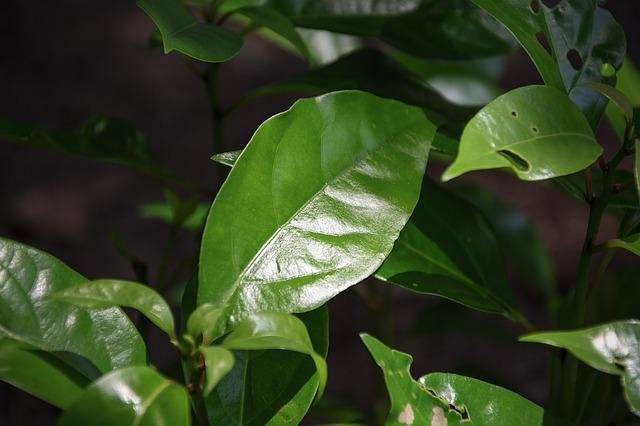
Ravintsara essential oil: properties, the importance of 1,8-cineole and the chemical composition of the essential oil of camphor. Aromatic components contained in the essential oil of camphor.
Ravintsara essential oil should not be confused with that produced starting from Aromatic Ravensara. Ravintsara essential oil is extracted from the evergreen Cinnamomum camphora tree, commonly called “Camphor“. Calling it essential oil of camphor, in fact, is not wrong even if there is a small distinction to be made: with the name of “essential oil of Ravintsara” we should refer only to the variety of Ciannamomum camphora cultivated on the island of Madagascar.
Camphor essential oil is famous for its balsamic and anti-inflammatory properties. It can be used as a natural moth to protect wood from moths and, at the same time, to perfume cabinets and drawers.
Camphor (Ciannamomum camphora) is a plant of the Lauraceae family, native to Asia. Camphor has a thick canopy, leathery leaves and white flowers that bloom to form flowering panicles located at the axil of the leaves. Small red drupes develop from the flowers. Camphor essential oil is extracted from the bark. Raw camphor is obtained from the innermost sections of the wood, obtained in the form of crystals soluble in alcohol and oil, the raw camphor is then refined by subsequent sublimation by distillation. In its natural habitat, the camphor tree can reach a height of 25 – 30 meters.
Ravintsara essential oil and cineole
Its composition sees a dense list of active ingredients, including the very popular 1,8-cineole, its fame is due to its medicinal uses: it is the basic ingredient of various mouthwashes and cough syrups. Its common name is eucalyptol because for the first time it was extracted from the essential oil of eucalyptus (Eucalyptus globulus). 1,8-cineole is also found in high percentages in cannabis and laurel essential oil. Its uses range from pharmaceuticals to the agricultural sector where it is used as a natural insecticide.
Attention! This does not mean that you can use Ravintsara essential oil as a repellent: in the industrial setting, its smell is used as a bait to attract insects.
According to toxicological studies, if used in high dosages, eucalyptol can be dangerous for health. If ingested or inhaled in high quantities, it can cause respiratory problems. The same study reports that the lethal dose in rats is 2,480 mg per kg. The benefits of Camphor essential oil are mainly linked to the 1,8-cineole compound which, as shown below, represents only one percent of the chemical composition, so using this essential oil it is really difficult to reach the levels considered toxic.
Eucalyptol has been shown to be effective in controlling the hypersecretion of mucus in the airways (this is why it is used in medicine in the formulation of sedative drugs for coughs and colds) and in the treatment of rhino-sinusitis.
The anti-inflammatory properties of 1,8-Cineole; according to what the researchers stated, if applied locally, cineole-based lotions would be able to soothe pains of various kinds by carrying out an anti-inflammatory action.
Aromatic components contained in the essential oil of camphor:
- limonene 19.38%
- sabinene 11.40%
- chavicol methyl 7.94%
- alpha-pinene 5.55%
- linalool 5.26%
- eugenol methyl 5.00%
- germacrene d 4.76%
- terpinene-4-ol 4.00%
- e-caryophyllene 3.54%
- δ-3- hulls 3.52%
- myrcene 3.43%
- α-terpinene 2.98%
- beta-pinene 2.91%
- γ- terpinene 2.15%
- α- phellandrene 1.99%
- camphene 1.33%
- β-ocimene 1.30%
- a-thujene 1.13%
- 1,8-cineole 1.08%
- paracymene 0.97%
- α-umulene 0.79%
- α-copaene 0,69%
- β-elemene 0.63%
- δ-cadinene 0.60%
- terpinolene 0.56%
- δ-elements 0.55%
- α-cubebene 0.47%
- α-terpineol 0.38%
- α- trouble 0.37%
- bornyl acetate 0.36%
- element 0.34%
- elimycin 0.23%
- γ-muurolene 0.22%
- borneol 0.21%
- bicyclogermacrene 0.20%
- g-cadinene 0.19%
- (e) -β-ocimene 0.19%
- ß-cubebene 0.16%
- eugenol 0.12%
- α-muurolene 0.11%
- δ-amorphene 0,10%
- alpha-eudesmol 0.10%
- cis-para-menth-2-en-1-ol 0.10%
- ortho-cymene 0.09%
- ß-selinene 0.09%
- β-bourbonene 0.08%
- trans-Cadine-1,4-diene 0.08%
- trans-para-menth-2-en-1-ol 0.08%
- cis-sabinene hydrate 0.08%
- trans-sabinene hydrate 0.08%
- caryophyllene oxide 0.07%
- ß-copaene 0.07%
- germacrene b 0.07%
- cis-Muurola-3,5-diene 0.07%
- trans-Cadine-1 (6), 4-diene 0.06%
- g-eudesmol 0.06%
- ß-eudesmol 0.05%
- trouble 0.05%
The composition just indicated is only indicative and refers to the essential oil of camphor. When it comes to natural products and essential oils, each production is a story in itself: everything can change according to the harvest period, the botanical variety used, the place of cultivation … Just think that in some cases, the content of 1, 8-cineole can represent 40% of the composition. It is difficult to find commercially an essential oil that contains such high percentages of cineole, the plants that return an essential oil of camphor with high percentages of cineole are those grown in Madagascar, known as Ravintsara.






